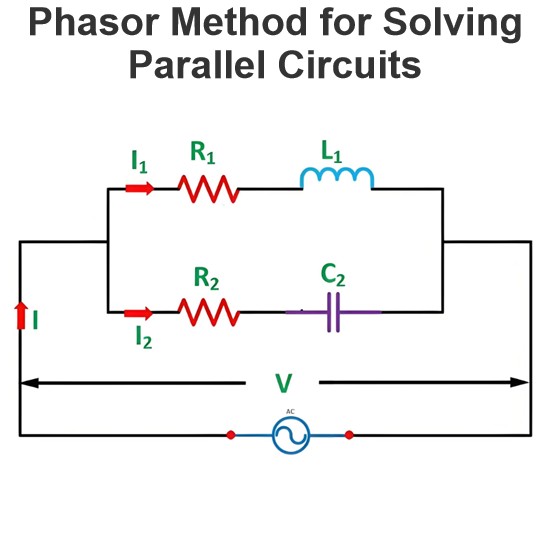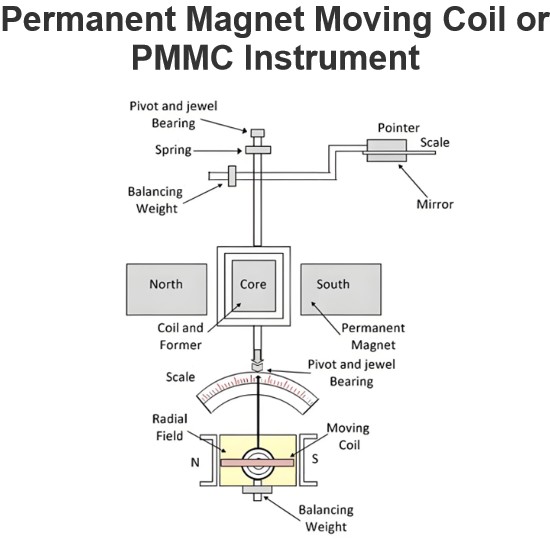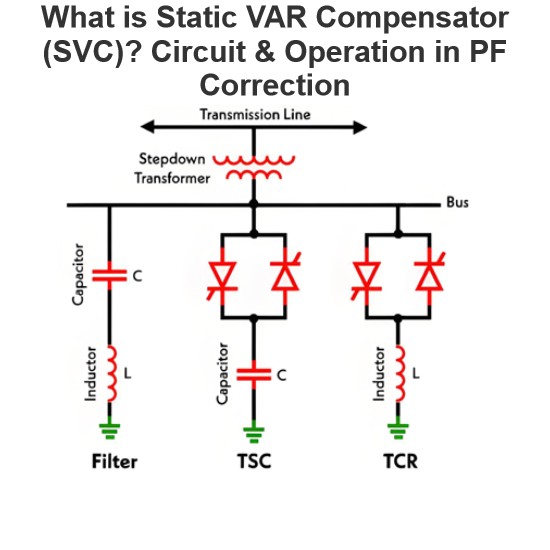| Brand | ROCKWILL |
| Model NO. | 3.6KV-24KVThe Indoor metal-clad withdrawable switchgea |
| Rated voltage | 3.6kV |
| Series | KYN |
Description:
The Indoor metal-clad withdrawable switchgear(hereinafter short as switchgear) is a complete power distribution device for 3.6~40.5kV, 3-phase AC 50/60Hz,single-bus and single-bus sectionalized system.
It is mainly used for power transmission of middle/small generators in power plants; power receiving, transmission for substations in power distribution and power system of factories, mines and enterprises, and starting of large high-voltage motor, etc. so as to control, protect and monitor the system. The medium voltage switchgear meets IEC298,GB3906-91. In addition to be used with domestic VS1 vacuum circuit breaker, it can also be used with VD4 from ABB, 3AH5 from Siemens domestic ZN65A, and VB2 from GE, etc. It is truly a power distribution device with good performance.
In order to meet the requirements for wall mounting and front-end maintenance, the medium voltage switchgear is equipped with a special current transformer, so that the operator can maintain and inspect it in front of the cubicle.
Enclosures able to withstand internal arcing.
3 or 4 sides internal arc protection IAC: A-FL and A-FLR. Internal arc withstand: 12.5 kA 1s, 16 kA 1s and 20 kA 1s.
Mechanical and electrical interlocks, to prevent incorrect operations.
100% factory-tested without the need for further tests on site.
Easy upgraded to meet your need and adapted to the extension of your installations.
Integration in factory-built outdoor substations for which the SM6 is particularly well designed.
Intelligent, connectable components like SC110 and TH110 provide continuous information about the health of your electrical installations, enabling asset management optimization through preventive maintenance.
Technical parameters:

Product detail:
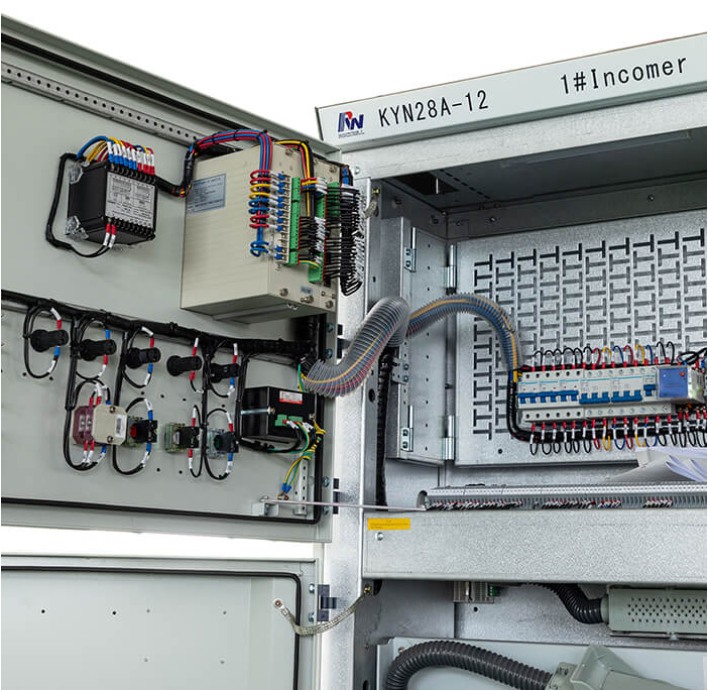
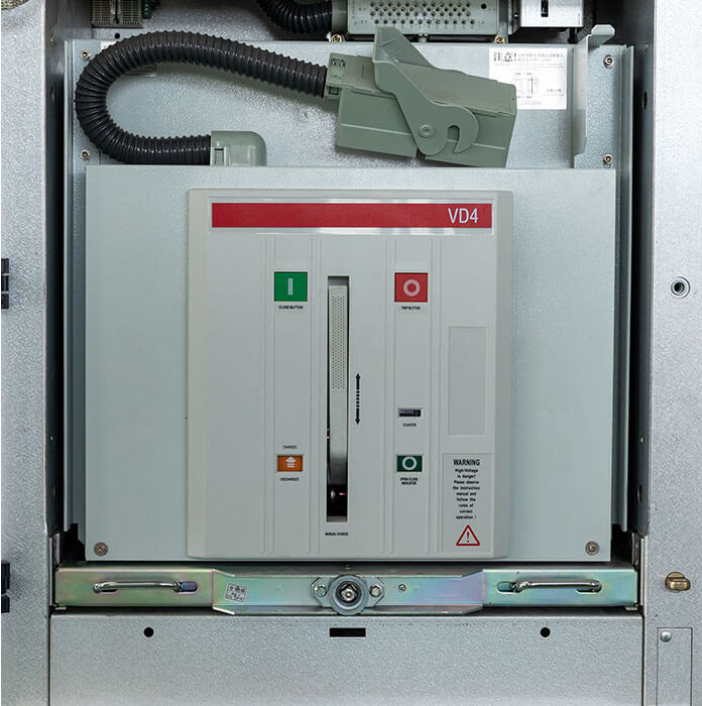
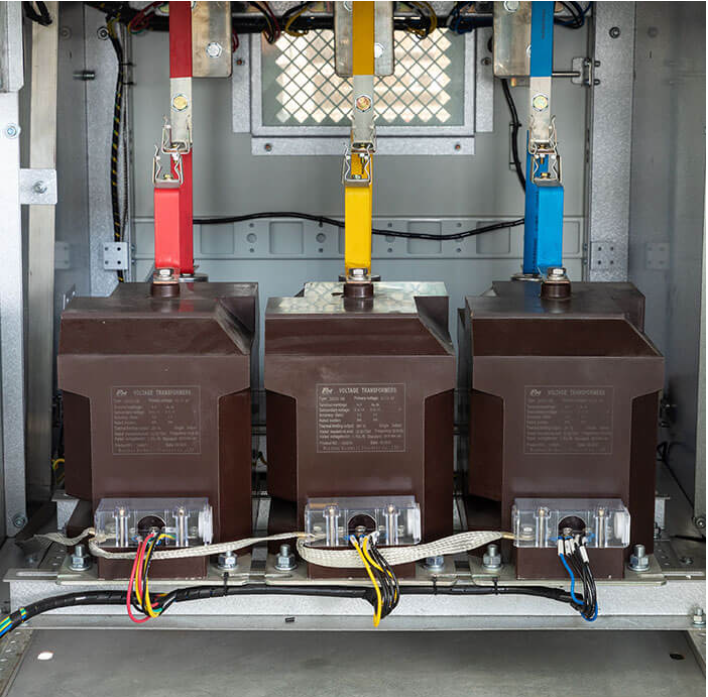
What is the working principle of the indoor metal armored pull-out switchgear?
Circuit Control and Protection:
Circuit Control:
Circuit breakers control the opening and closing of circuits. The working principle of circuit breakers is based on electromagnetic induction and thermal effects. During normal operation, current flows through the contacts of the circuit breaker, which remain closed. When an overload condition occurs, and the current exceeds the rated current of the circuit breaker, the internal thermal trip mechanism will open the contacts due to the heat generated by the current, thereby interrupting the circuit.
In the event of a short circuit, the high short-circuit current will cause the internal electromagnetic trip mechanism to act instantly, quickly opening the contacts and protecting electrical equipment and lines from damage caused by excessive current.
Protection Devices:
Other protective devices, such as overcurrent relays and ground fault protection relays, are also equipped. These protection devices continuously monitor parameters such as current and voltage in the circuit. If any abnormality is detected, they send a trip signal to the circuit breaker, ensuring the safety of the circuit.
Power Distribution:
Power is introduced into the switchgear's busbar compartment via busbars. The busbars distribute the power to the circuit breakers in each branch. The circuit breakers then transmit the power to different load circuits, enabling the control of power supply to multiple loads. For example, in a building's power distribution system, medium-voltage power from a substation first enters the busbar of the switchgear and is then distributed to the distribution panels on each floor through circuit breakers, providing power to lighting, outlets, and other equipment on those floors.
Interlocking Functions:
To ensure operational safety, the switchgear is equipped with various interlocking mechanisms. For example:
The trolley can only be moved from the service position to the test or maintenance position when the circuit breaker is in the open (off) state.
There is an interlock between the grounding switch and the circuit breaker. When the grounding switch is in the closed (on) position, the circuit breaker cannot be closed, and vice versa.
These interlocking devices effectively prevent operator errors and avoid dangerous operations such as switching under load or closing the grounding switch while the circuit is energized.

